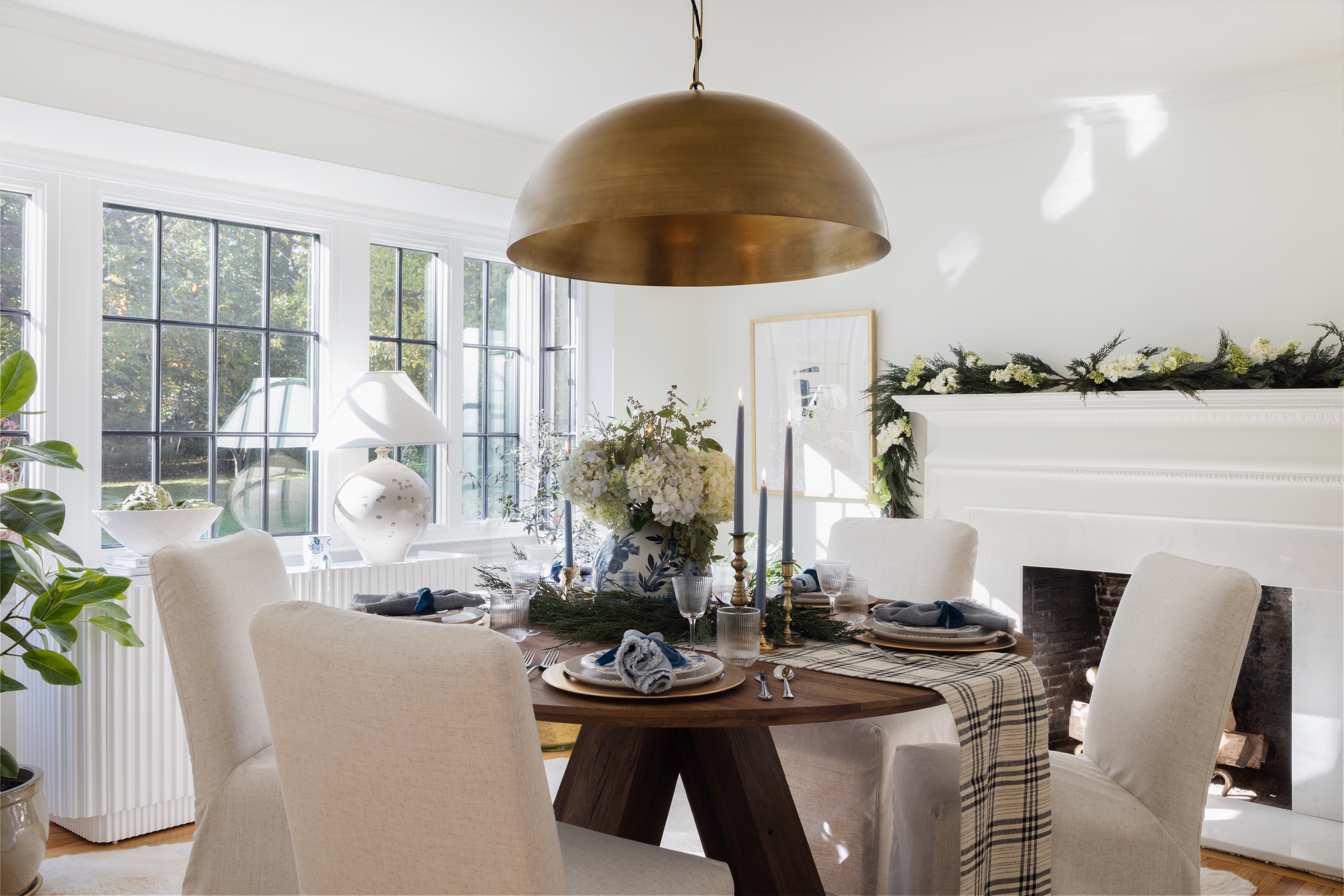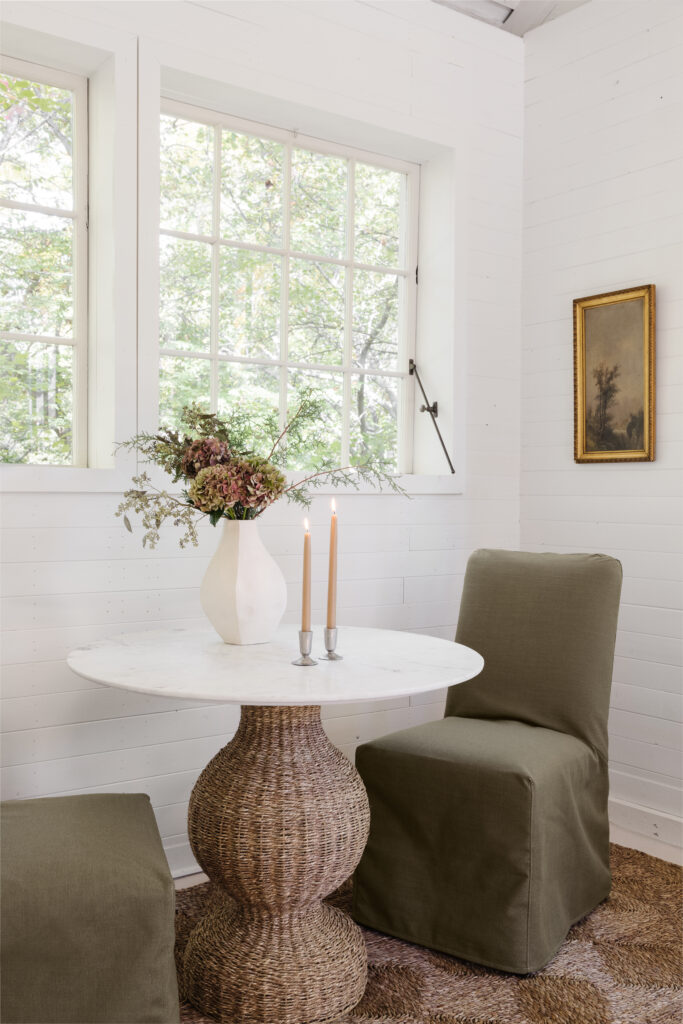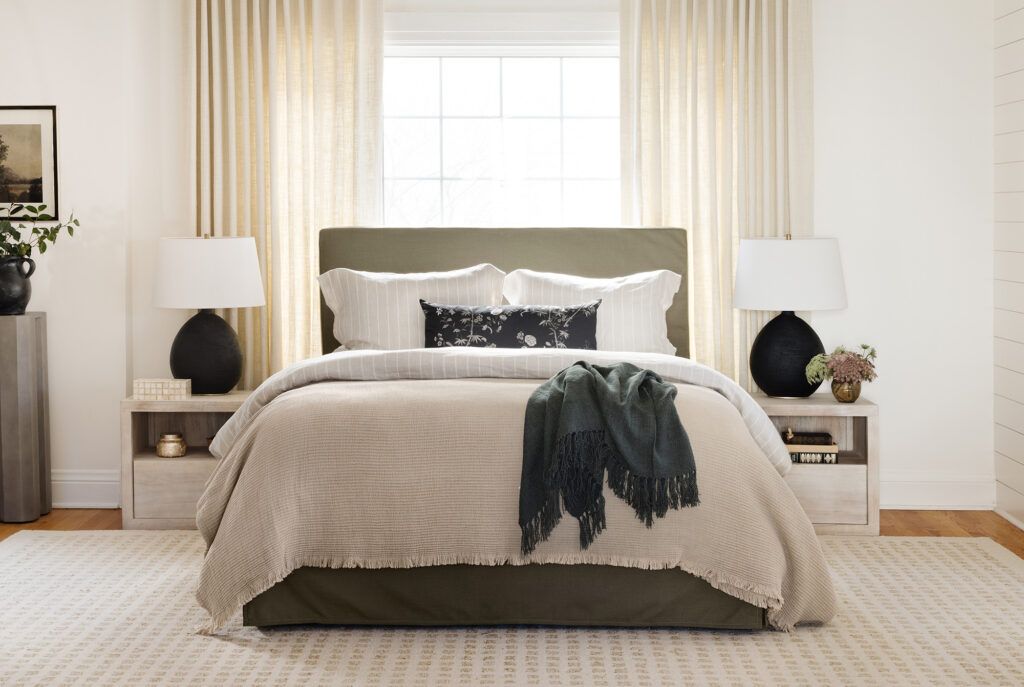One of the best things about personal style is that you can draw inspiration from all parts of the world and all time periods. If your style errs on the traditional side (maybe the term “grandmillennial” resonates?), then you might find yourself drawn to English or French country designs — but many traditional furniture styles originated in America, too.
Starting in the 17th century, craftspeople in the U.S. — though not yet a country — started designing and manufacturing high-quality wooden furniture. While its style shifted throughout the centuries, certain facets of American furniture design held up over time; namely, its emphasis on quality, hardwood designs that tend to be simpler than their overseas alternatives in France and the U.K. Traditional design-lovers often covet and collect these now antique furniture pieces, but you don’t have to scavenge auction sites to bring American furniture into your own home. Instead, you can find contemporary alternatives for a timeless, old-meets-new feel. Here, we’ll give you the rundown of some of the more influential styles of American furniture, and their most notable qualities.
What is American furniture?
There’s no singular style, but generally speaking, American furniture through the years has been shaped by a number of factors: immigrant craftspeople, overseas trends (particularly those in England and France), and sentiments about nation-building. Here’s how American furniture design developed through the years.
Early Colonial Style
When the first settlers arrived in America in the 1600s, they brought little with them to furnish their new homes; ships simply couldn’t accommodate much more than a chest or so of belongings per family. So, when they arrived, they were glad to find ample timber, which furniture makers transformed into the first pieces of early American furniture. In the early 17th century, American furniture pieces were characterized by sturdy oak wood and rigid right angles — a far cry from the ornate Jacobean styles popular across the pond. Because furniture was so simple in shape and structure, craftspeople sometimes added visual interest to pieces with intricate low-relief carvings.
Later in the 17th century, a new style gained popularity among the wealthy in port cities like New York and cities in New England, like Portsmouth, New Hampshire, and Boston. During the reign of William III and Mary II (1689-1702) in England, furniture became more elaborate and slender. Though this style was originally inspired by the courts of France’s Louis XIV (which also drew inspiration from Chinese design), it became known as William and Mary style when it eventually spread to the colonies. These furniture pieces were taller and more lightweight than their predecessors, and often used dovetailing in their assembly. They also often featured veneers (thin sheets of wood) that created color contrasts and dramatically shaped legs.
Queen Anne Style
Trends inevitably end. And when William and Mary style fell out of favor in the colonies, Queen Anne style took its place. Also called late Baroque or early Georgian style, furniture in the early 18th century favored more subdued curved lines, like S back chairs and S-curved cabriole legs, over the straight lines of the previous era. In this colonial period, Boston became a major producer of Queen Anne style furniture, though different cities made their own contributions to this style of American furniture. Cabinetmakers in Newport, Rhode Island, for instance, crafted ornamentation like scalloped shell motifs in dressers, while craftspeople in Philadelphia created S-curved chairs that used negative space as a key design feature. The most popular dark wood used for Queen Anne style furniture was black walnut, stained to resemble imported mahogany.
Chippendale Style
In the later part of the 18th century, Chippendale style — which was heavily influenced by French Rococo and named after the English cabinetmaker Thomas Chippendale — came into fashion. It favored dark wood like mahogany, cabriole legs with claw-and-ball feet on chairs and sofas, and intricate carved patterns with nature-inspired motifs. Furniture — like highboy dressers — favored straight sides, but often featured curved “ears” at their top (think: Cogsworth in Beauty and the Beast). Increased leisure activity among the upperclass led to the design of new, socially inclined pieces of furniture, like the three-legged tea table.
In this time period, makers in different regions of the new nation developed their own takes on Chippendale style: In Newport, Rhode Island, the shell motifs used in Queen Anne style furniture found new life in the form of block-and-shell carvings on Chippendale furniture.
Federal and Hepplewhite Styles
Maximalistic Chippendale style fell out of favor after the British cabinetmakers George Hepplewhite and Thomas Sheraton popularized a more restrained style of furniture in the late 18th century. Classical-inspired forms, featuring Roman and Greek motifs like urns and drapery were popular during the Federalist period — the 30 years that followed the formation of the United States in 1776. American furniture styles in this time period were structurally simpler than its predecessors, though it was still decorative. Inlays of contrasting dark wood served as ornamentation on dressers, as did subtle carvings (often of patriotic American imagery, like bald eagles). Furniture in the Federal style often featured rich veneers and varnishes, rounded corners, and slim legs.
Neoclassical and American Empire Style
Trends are cyclical — which explains why, after the relative simplicity of the Federalist period, more grandiose designs came back en vogue. Similar to Federal style, American Empire style favors neoclassical imagery — but in a far more maximalist sense. Think: Thick pedestals, ornate turnings, finials, scrolled arms, gilt stenciled furniture, luxe lacquers, lavish upholstery, and rich, dark woods. Egyptian imagery also was also popular in motifs of this time period. And don’t forget the claw feet on sofas, chairs, and more. In the time of rapid growth, elaborate American furniture styles signaled prosperity (or, at least, the hope for it).
Victorian Style
During the Victorian era of the 19th century— 1820 to 1914, approximately — a number of design styles grew in popularity in the United States, many of which favored ornate, art nouveau decorations that evoked Rococo, Gothic furniture (which drew inspiration from formal medieval design and architecture), and Egyptian-inspired imagery. The rate of globalization grew during this time period, which led Americans to gain increased exposure to European design styles, especially after the Civil War. Eventually, this would lead to the development of personal style, as people began mixing different styles of American furniture.
Around this 19th century time period, Shaker communities favored a far different style of American furniture, characterized by its simplicity. They eschewed classic art nouveau ornamentation (including inlays, veneers, and carving) for minimalism and straight lines. Shaker craftspeople also favored American woods like pine, maple, and cherry over imported alternatives. Although there’s just one Shaker community left today (with just two people in it), this style has prevailed through time and remains popular now.
Arts & Crafts Style
During the late Victorian period into the early 20th century, the Arts and Crafts movement emerged as a response to rapid industrialization in England, and then America. While there was no singular “style” that gave the Arts and Crafts movement a cohesive look, it did promote craftwork and handmade goods, especially in a time of increasing mass-production. A number of handiworks flourished in this time, including pottery, handwrought silver and metal objects, rugs, and even light fixtures. It was in this period that American architect Frank Lloyd Wright, born in 1867, created his Prairie School style, which favored natural materials and organic-feeling architecture.
American Furniture Styles Today
While you can find contemporary furniture that evokes any of these American furniture styles today, there’s no one stand-out style that currently represents the U.S. Instead, design has become even more of a melting pot of different global inspirations, references, and materials. That said, you can still find plenty of furniture that’s made in America (fun fact: High Point, North Carolina is known as the “Home Furnishings Capital of the World”) and pay homage to history with pieces that draw inspiration from designers of years — and centuries — past.



